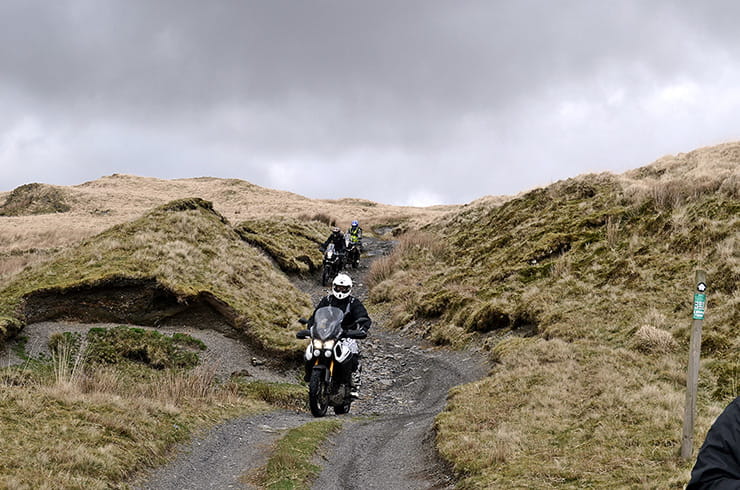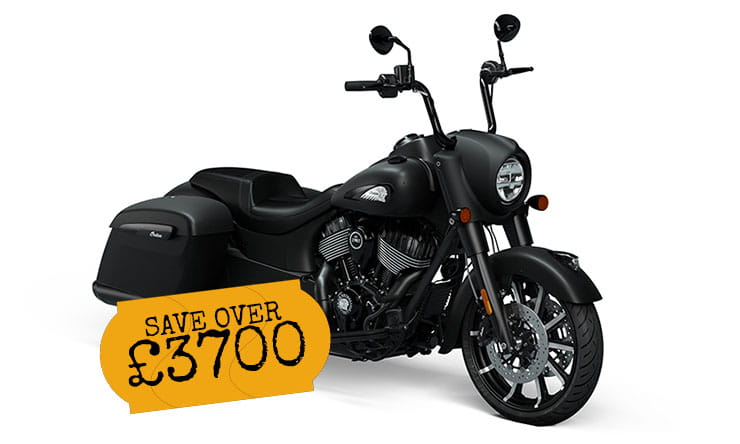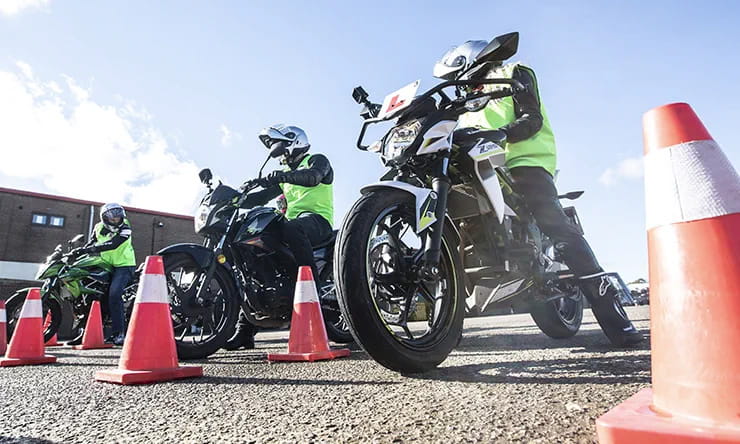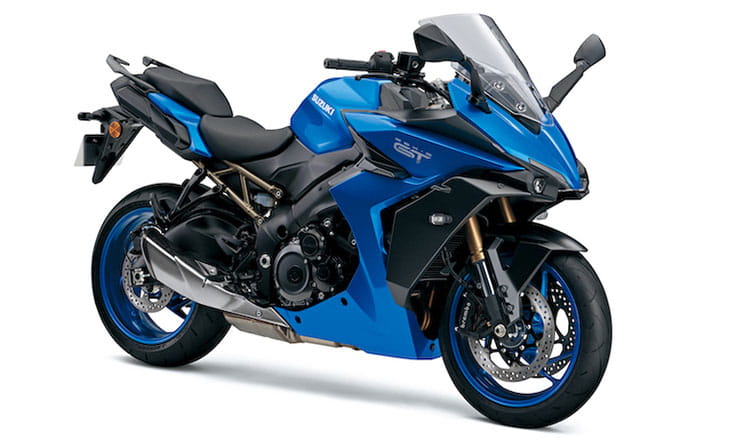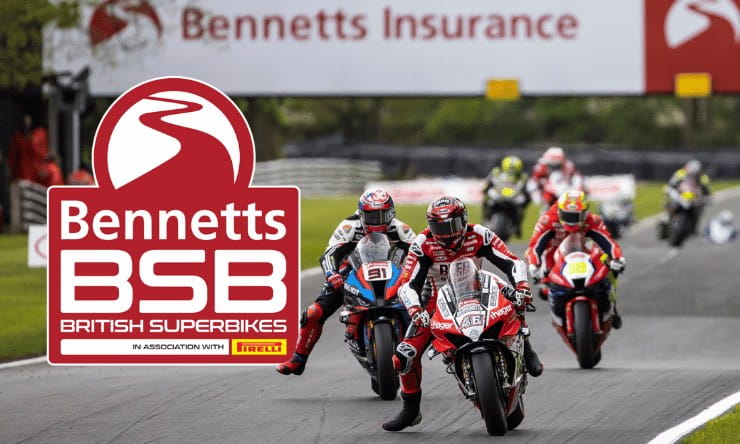Riding your bike along a muddy trail, up through the hills and across rivers is one of my personal highlights of travelling on two wheels, and it really could be yours too.
In the UK at least, it's not quite as straightforward as it could be, what with an ever-decreasing number of legal lanes along which to ride, as well as the difficulty the lone rider might have in knowing how to begin their first foray into trail riding. But with a few key things to consider, you too could be enjoying the stunning scenery and routes that only trail riding can bring you…
Riding green lanes and byways is NOT riding off-road
Trail riding in the UK is riding green lanes and byways open to all traffic – as such, you need to be on a road-legal, registered, insured, taxed vehicle with a valid MoT, and you need to abide by the law.
Riding off-road means you’re on private land with the owner’s permission, for instance a motocross track; this is the only time you don’t always need to have a road-legal machine.
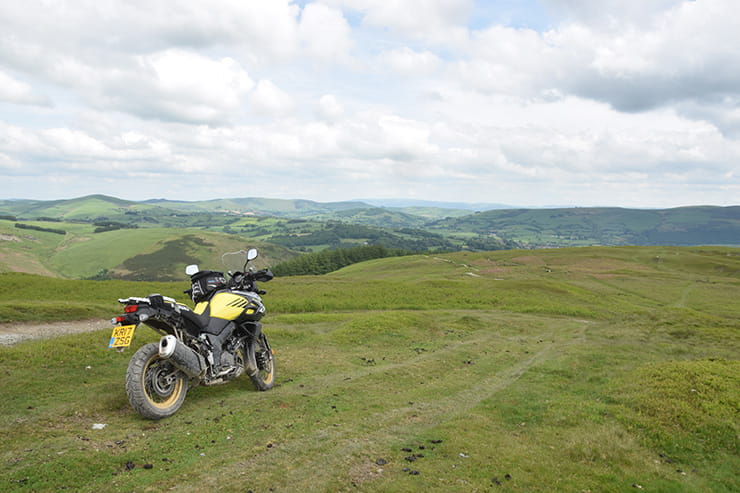
Where can you ride green lanes, byways and trails?
Trail riding in the UK hasn’t got any easier in recent years, with many lanes closed to traffic, so legal routes to ride can be difficult to find.
One of the best things you can do is join the Trail Riders’ Fellowship, an organisation comprised of regional groups tasked with fighting to keep lanes open, who also organise ride outs around the local county.
An Ordnance Survey map is well worth buying as it features the level of detail you need to identify the legal trails you can ride, and you can highlight all the ones you want to ride before you go out, planning a great day.
You’re looking for lanes marked as Byways Open To All Traffic (BOATs), Unclassified Country Roads (UCRs) and Unsealed, Unclassified County Roads (UUCRs).
• A BOAT is marked as a line of green crosses on the OS maps
• A UCR or UUCR is a road without an A, B, or C road classification.
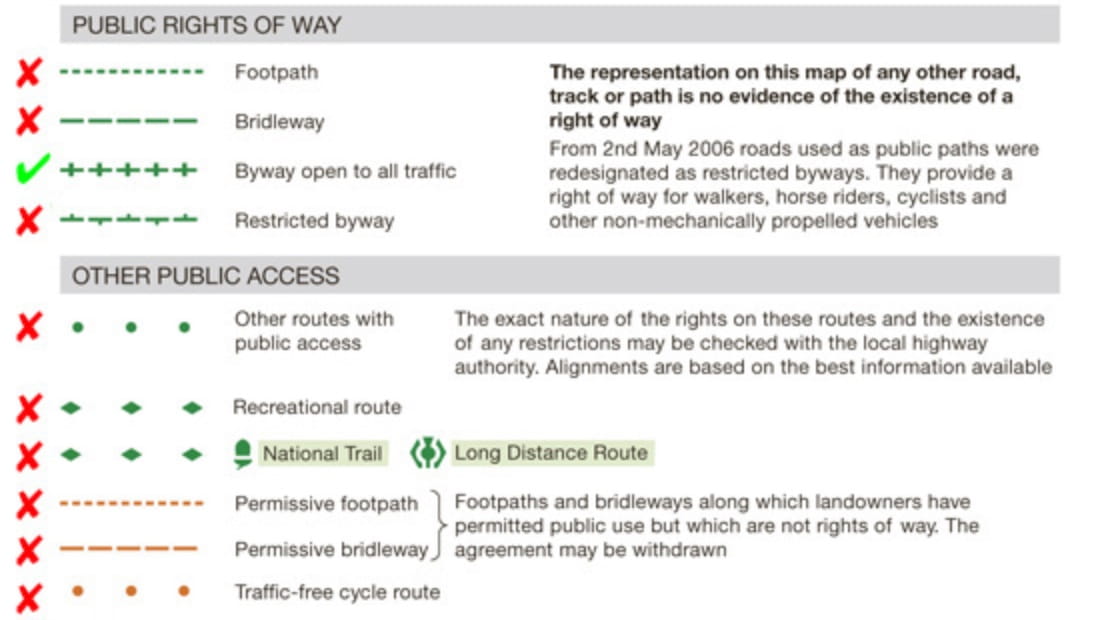
Besides roads without a classification, you must only ride on a byway open to all traffic
Some very good and easily accessible locations to ride include Salisbury Plain and Thetford Forest. For the novice rider, taking a run along the old Fosse Way south of Cirencester, or along the Ridgeway in Wiltshire are good places to start. Local Facebook groups can also be handy to find local ride-out groups. What must be stressed again is that these are legal routes for traffic and therefore not technically ‘off-road’; the road just doesn’t happen to be paved or of normal width to take regular traffic – often these are old roman roads or cattle tracks. This confusion can lead to confrontations with ramblers and other non-motorised trail, users who assume that you don’t have a legal right to be there, but as long as the trail is marked as a BOAT or a UCR, and doesn’t have a TRO imposed upon it – a Traffic Regulation Order, which is a temporary ban to traffic, often imposed through winter months when most damage is done – then you have as much right to be there as they do. But it’s gentle negotiation with such people that generally works better, as opposed to outright confrontation. Always be polite, and we’d suggest pulling over and stopping with your engine off if you do come across anyone – the future of trail riding is in all of our hands.
Needless to say, if you encounter any horse riders, please stop your engine and let them pass safely. If approaching from the rear, take your time and do not rev your engine or hoot your horn – wait until the rider is aware you’re behind them, then pass only when it’s safe and they’re ready.
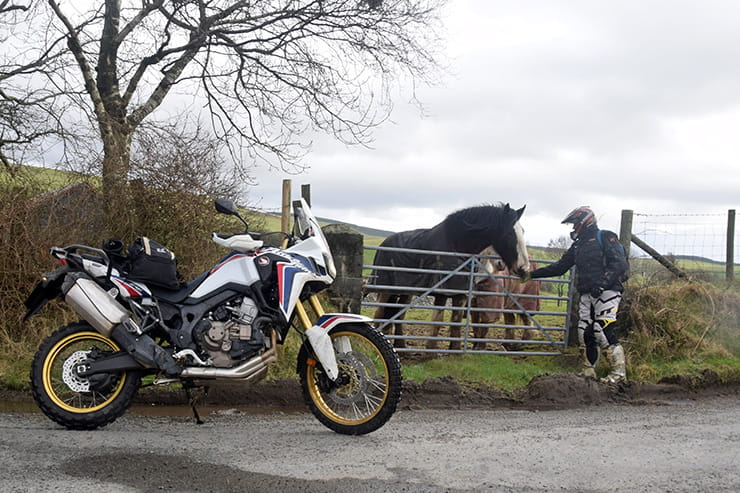
You might also want to consider the Trans European Trail (TET), a recently designated route running approximately 21,000 miles from the bottom of Europe in Spain, all the way to the top of Europe in Norway. It also crosses the Continent, and is a mixture of trail and tarmac (though as much of it is trail as possible). You can download the route for free from the website.
The TET stretches some 1800 miles through the UK, with some of the trails – especially in the Lake District – being quite challenging and rocky, whereas those through Gloucestershire are much more manageable, such as the Fosse Way and Salisbury Plain. There’s an active Facebook group to share advice with other riders at www.facebook.com/groups/Transeurotrail.org
Ultimately, we can’t recommend enough that you join the TRF. Besides the great social side and help on the best routes, you’ll get the latest advice on where you can ride and can quickly get any queries answered.
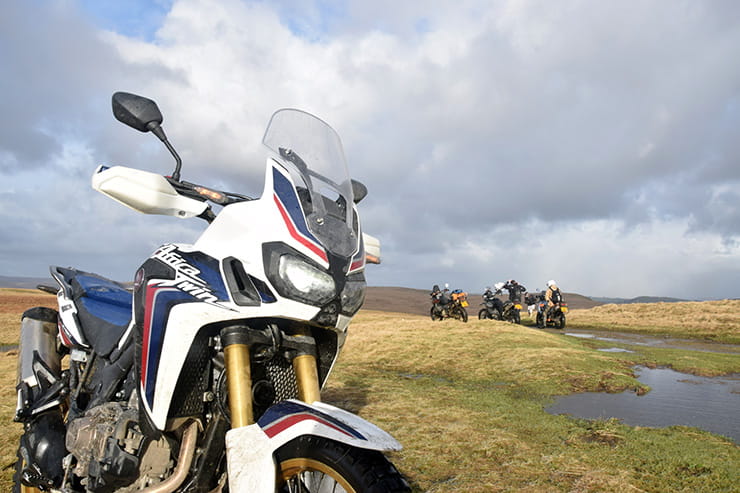
The most important things to remember when trail riding
• Respect the other people on the trails, and know that they might not realise it’s a road
• Keep your speed below 25mph for the safety of yourself, others and wildlife
• Check the map regularly, to ensure you’re on a legal trail
• Do not leave the route – you’ll be straying onto and potentially private property
• Respect lane closures as they’re there to preserve the trail and wildlife
• Always close any gate behind you
• Always ride a legal bike and please don’t use loud exhausts
• Enjoy it! This is a fantastic way to discover new locations in the UK and Europe
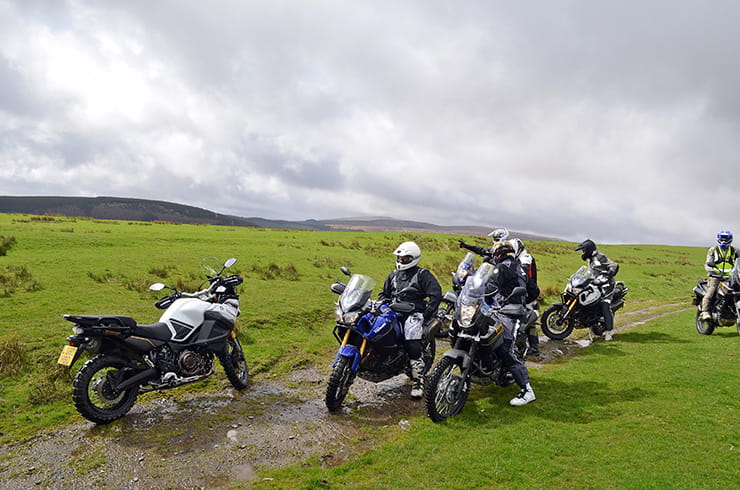
What’s the best bike for green lanes, byways and trails?
For novice and experienced riders, it's best to go for something smaller in engine size than 400cc, which will make it relatively light weight and easy to manage. Bikes such as the Honda XR400 and Suzuki DRZ400 have historically been the motorcycle of choice for many trail riders, as have Honda XR250s, Yamaha TTR250s and Yamaha Serows. All are four-stroke and reliable, though given their age of manufacture, some could be getting a bit long in the tooth by now. Good ones fetch strong money these days, with values heading north of £2,000.
More modern are Honda’s CRF250L and Kawasaki’s KLX250, both popular for casual green-laners and not overly expensive to buy new or second hand. Neither bike offers the last word in performance, and many riders favour the full-on enduro machines from KTM and Husqvarna, but arguably these are unnecessary for green-laning – especially for the novice rider – with higher costs and performance not always easy to utilise on the limited amount of legal trail we have access to.
Don’t overlook AJPs range and they’ve been getting some good reports, and SWM’s new off-road bikes are essentially rebadged Husqvarnas, which also seem like a sensible shot. CCM’s GP450 is very good if you want something that can do everything, or you might want to try the BMW G310GS. While the changes Rally Raid makes to the Honda CB500X give it good green-lane capability.
If buying second-hand, you need to consider all the usual checks – blue smoke from the exhaust is bad, and while these machines might legitimately have scuffs and scrapes on the bodywork (you can’t be too precious), look for any signs of serious damage (or botched repairs) to the frame and swingarm. And of course, still do all your usual V5 and HPi checks.
In terms of the large-capacity adventure machines increasingly touted as being off-road capable – such as the BMW R1200GS, Honda Africa Twin, Triumph 800XC etc - you have to be a bit mindful that while in the right hands they can be very capable indeed, in the wrong hands they can be daunting and potentially dangerous given their weight. Tyre choice is one of the most important things to consider (see below), as the 'trail' tyres that often come fitted with the bikes as standard will not be up to the job of coping with the mud and rugged terrain of UK trail riding. Tyres are the first thing to change, and after that you can't beat some good training (also see below) to improve your confidence and overall bike control; essential ingredients for trail riding.
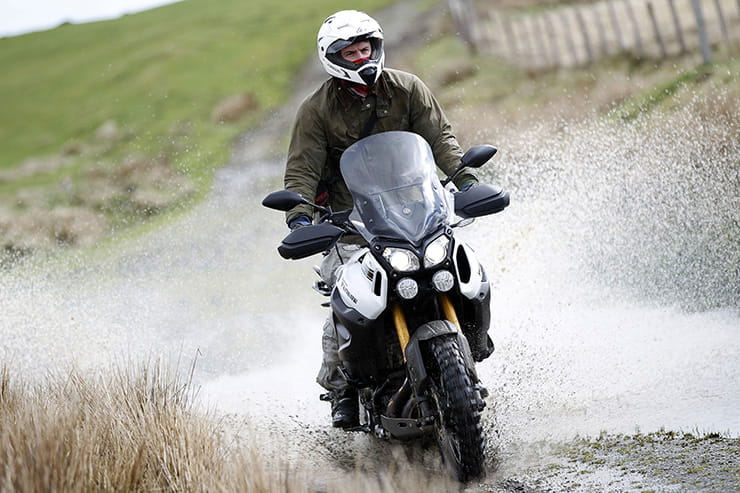
What should I wear when riding green lanes, byways and trails?
While speeds are generally a lot lower on trails than on tarmac, you're certainly more likely to take a tumble through the course of the day. And almost guaranteed when starting out. It's obvious then to think of the basics; a good helmet (with goggles if you prefer), a jacket with back, elbow and shoulder pads, trousers with knee and ideally hip protection, as well as kidney belt to stop your organs jiggling about.
Boots are probably the most important consideration, with it easy to twist an ankle or catch a foot in a rut. Many trail riders as a wear motocross boots, which usually aren't the comfiest – or waterproof – but they do offer the most protection and are relatively cheap to buy. After that it's the level to which you're prepared to compromise for better comfort and waterproofing. Boots such as the Sidi Adventure or Alpinestars Toucan offer a good blend of protection, comfort and waterproofing, but they are expensive to buy. Sometimes a stiff army boot is just as good and better than some of the budget options, which can be a false economy.
Most textile riding gear claims to be waterproof, and it often is once the outer layer has soaked through to the waterproof inner, but often it's much better, and more comfortable, to head out with a cheap set of waterproof overalls or jacket and trousers. Army surplus stores do these for a good price, and it just means that everything underneath stays dry. And if you rip them, they've not cost you the earth.
What tools should I carry?
Riding out on the trails can lead to the odd issue, with breakdowns and repairs a possibility. It’s easier to pick up a puncture, break something or for increased wear and tear to take hold. Having the tools to fix a puncture is one of the main concerns. If you’re running tubeless tyres take the necessary plug and pump to get back up and riding again. If your tyres are tubed then tyre levers, a puncture repair kit and even spare tubes are handy. For bikes without a centre stand you’re going to have to improvise. A tyre sealant such as Slime is a handy product to save you the hassle of fixing punctures, and shouldn’t casue handling problems with speeds being so low.
Consider also taking a little pack of cable ties, a spare chain link, a tube of plastic weld and some wire thread for binding things back together. Also consider that if your’e riding through particularly wet terrain, or crossing rivers, then there’s a chance you could flood the bike if you drop it, so that would require tools to take out the spark plugs in order to drain the water. For the novice rider it’s a situation best avoided.
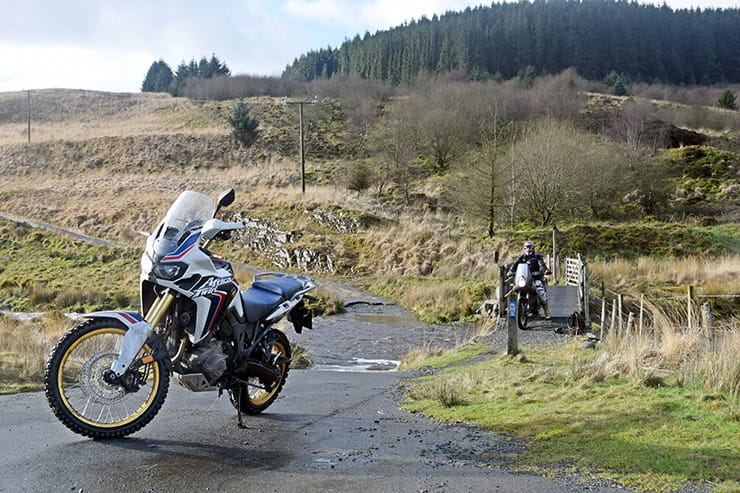
What are the best trail tyres?
Choosing tyres for trail riding is often a big consideration, with a lot depending on what type of machine you’re riding. If you’re on a traditional trail bike with a 21-inch front wheel and an 18-inch rear then your options are limitless, and usually you won’t find so much compromise; you’ve got a trail bike therefore you’re going to fit a trail tyre. It’s the larger capacity adventure-style bikes that are more of an issue, often with a 19-inch front and a 17-inch rear, and a much greater need to a compromise between road and off-road, not to mention having to cope with a great deal more power than a trail bike.
The trail tyres (such as Michelin Anakee 3 or Dunlop Trailmax) that often come fitted as standard on machines such as the Africa Twin or GS aren’t really much good off road – they’ll handle compact dry services well enough, but as soon as the ground gets loose or wet they just don’t have the grip.
Mid-way tyres such as the Heidenau K60 or Continental TK70 offer better grip, as well as decent mileage (upwards of 7,000 miles for the Heidenau), but again, if the conditions are muddy or sandy, then there’s just not enough traction. That leaves the likes of the Continental TKC80, Michelin Anakee Wild and Metzeler Karoo 3 as more dirt-focused tyres, with the Anakee Wilds arguably offering most grip for large-capacity adventure bikes in the dirt. The compromise of all those tyres is the slightly wooden on-road handling and increased road noise from the knobbly tread. Ultimately though, without the right tyres you’re at a huge disadvantage.
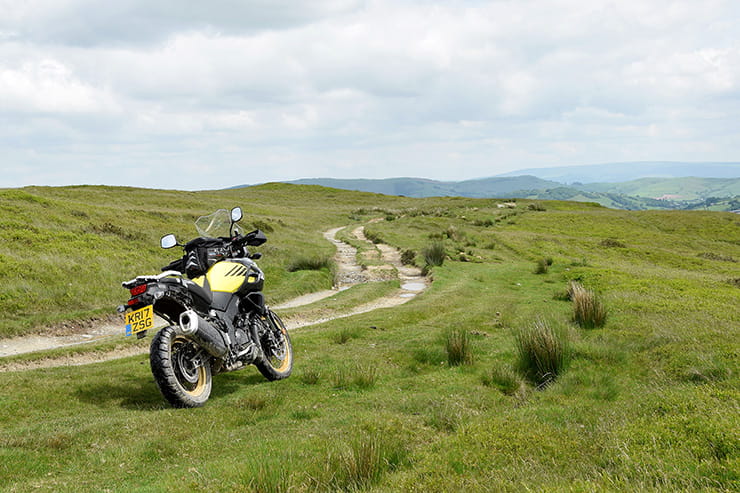
How can I stay safe on green lanes?
It’s fair to say that when trail riding there is a greater likelihood of falling off, though speeds are usually much less than they would be on the road. If it’s your first time or you’ll still learning the ropes then take it easy; don’t ride above your comfort speed. It’s also advisable not to go out on the trails alone – irrespective of your capability – as accidents do happen and many trails can be remote and seldom used.
A first-aid kit is handy to carry, and first-aid training is worthwhile. The basics of how to splint a fracture or put a rider in the recovery position are useful anywhere, and do assume that you’re not always going to be able to get phone reception.
Also consider the time you spend on the trails; it’s demanding on the body and mind, so shorten your riding day as most accidents tend to happen when tired, and riding too great a distance for your stamina levels. This isn’t the Dakar. This is enjoyable trail riding in the countryside.
How fit do I need to be to ride trails?
Something that many people overlook, but is more imperative to trail riding than most other forms of motorcycling, is fitness. Navigating ruts, standing on the pegs, picking up your bike if you've dropped it for the fifth time of the day all takes effort.
If you're not in great shape be realistic; ride for a few hours rather than all day, and build up to it.
Obviously picking up a lightweight trail bike versus something like an R1200GS is going to make a big difference to fatigue, and often whether you fall off or not in the first place. If you do drop the bike, stand facing the top as it lays on the ground, turn the bars away from you and squat down with the end of the bar that’s at the bottom cupped in both hands. Then lift slowly, bending at the knees. You can work your way up with even a heavy bike this way, but the best bet really is to get some training…
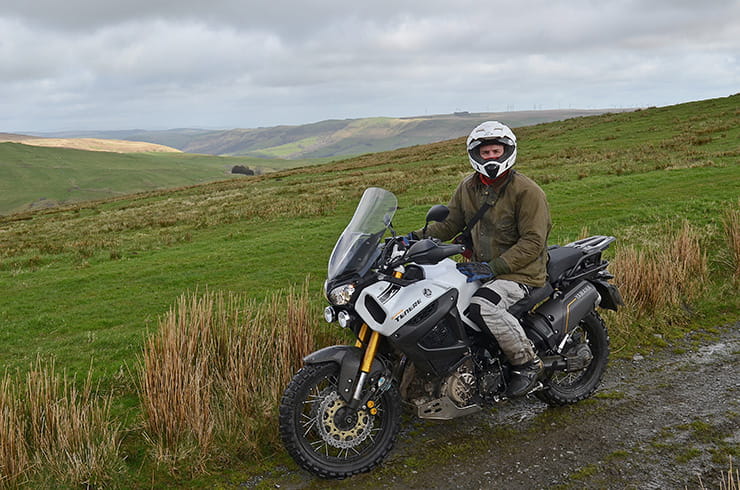
Is there any training worth doing for riding byways?
Most of us just want to get on a bike and go riding, but for trail and green lanes, signing up to one of the many training courses around the UK and Europe is a good idea, like Trail Riding Days in Wales, who helped with this feature.
Companies such as the Dave Thorpe Honda Off-Road centre, or the Yamaha Off Road Experience both have their own fleet of bikes to use, meaning you can give it a go without investing in a bike and all the kit. If you like it, then you can go out and buy the gear. They're also great places for the novice to intermediate rider to work on their skills and improve their riding.
For the large-capacity adventure-style machines there are also some very good weekend-long training courses geared up to improving the skill-set of any rider. The BMW Off Road Skills course in Wales is one of the most well-established, and is excellent for improving your control and balance on any big bike, not just the GS machines used for training.
There's also now the Honda Africa Twin centre, and Triumph is opening its own centre in Wales, not to mention more tailor-made courses offered by the likes of Kevin Hammond at Adventure Bike Training in East Anglia and TrailQuest in the Malvern Hills for a good all-round introduction to off-road riding and travel.
When choosing the right training centre, it'll probably be a question of considering cost, location and the focus of the course. All the below come recommended, so there’s little left than to urge you to give it a go and discover a great new side to biking!
Great training for green-lane, byway and trail riding
Ady Smith Off Road Skills
Adventure Bike Training
BMW Off Road Skills
Dave Thorpe Honda Off-Road
Honda Africa Twin Centre
Sweet Lamb Adventure Rally Bike Academy
Trail Ride Wales
Trail Riding Days
Trailquest
Yamaha Off-Road Experience
Triumph Off-Road Centre



